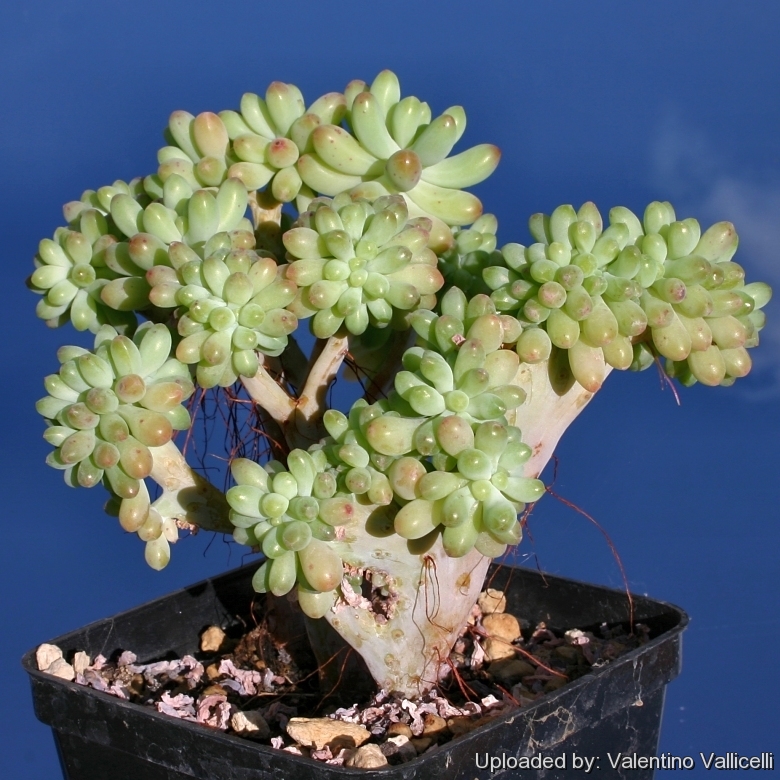
Sedum pachyphyllum f. cristatum Photo by: Valentino Vallicelli
Tiny crested succulent with small attractive club-shaped blue leaves.
A wonderful sight for succulent collections and windowsill planters.
Origin and Habitat: Garden origin (Nursery produced cultivar) The standard species comes from Mexico (Sierra Mixta, San Luis and Oaxaca)
Synonyms:
See all synonyms of Sedum pachyphyllum
Common Names include:
ENGLISH: Many Fingers, Succulents Water Plant, Blue Jelly Bean, Silver Jelly Beans, Succulent Beans, Stonecrop
Description: (standard form): It is a small bush forming or ground-hugging succulent up to 30 cm talll, with light green silvery leaves mass along short stems. It spreads over time by rooting stems and fallen leaves that easily take root to form a dense ground cover. It may become very straggly with age. Young plants may be quite compact and will flower, when they are quite small.
Stems: Woody at base, much branched, upright at first, but later curved and trailing. Up to 50 cm long, but usually less and are bare in the lower half. In time of drought the stems carry only a small terminal cluster of leaves.
Leaves: Short, thick, finger-like to club shaped upward curved. They are grey or light green with a glaucous-bluish bloom. Leaf tips usually turn red in winter when kept dry or in sun.
Flowers: Yellow, with small pure yellow petals. Sepals are free, spurred, club-shaped, and very uneven. Stamens are long and carpel beaks are short and stout.
Blooming season: Flowers appear in the summer.
Crested form: The rare crested form produces magnificent, fun shaped glaucous-blue leaf rosettes and may assumes many fascinating shapes.
Subspecies, varieties, forms and cultivars of plants belonging to the Sedum pachyphyllum group
Notes: Several different forms and cultivars of S. pachyphyllum are common in cultivation, one of the prettiest of them has yellow-green leaves that cluster densely at stem apex with noticeably redder leaf tips. Another form is stouter with more blue-glaucous leaves with only an hint of red on their tips or none at all. Sedeveria humbellii is a very common cross bettween S. pachyphyllum and Echeveria derenbergiiSN|27443]]SN|27443]], but not usually named. Another very common hybrid created in California involves S. morganianum and S. pachyphyllum and is commonly called Sedum burritoSN|12383]]SN|12383]] or Giant Burro's Tail.
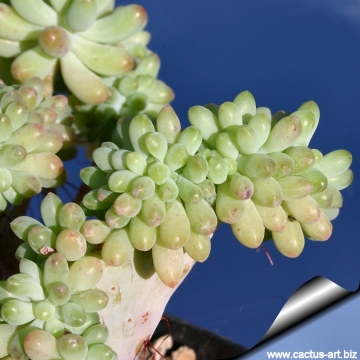 Sedum pachyphyllum f. cristatum Photo by: Cactus Art
Sedum pachyphyllum f. cristatum Photo by: Cactus Art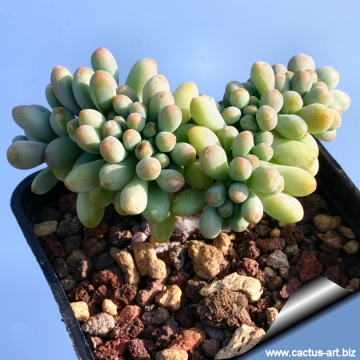 Sedum pachyphyllum f. cristatum Photo by: Cactus Art
Sedum pachyphyllum f. cristatum Photo by: Cactus Art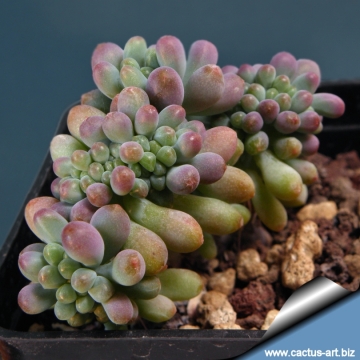 Sedum pachyphyllum f. cristatum Photo by: Cactus Art
Sedum pachyphyllum f. cristatum Photo by: Cactus Art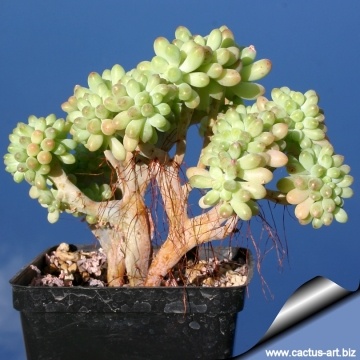 Sedum pachyphyllum f. cristatum Photo by: Cactus Art
Sedum pachyphyllum f. cristatum Photo by: Cactus Art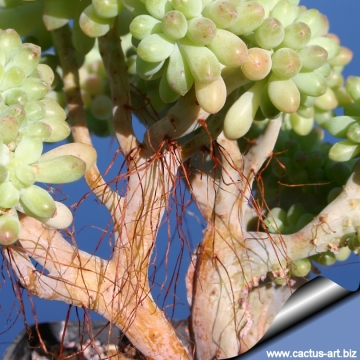 Sedum pachyphyllum f. cristatum Photo by: Cactus Art
Sedum pachyphyllum f. cristatum Photo by: Cactus Art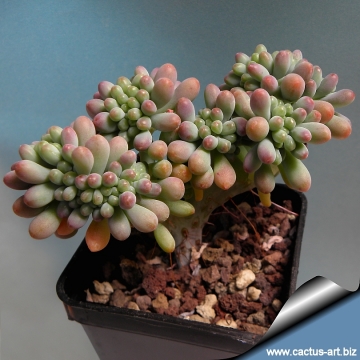 Sedum pachyphyllum f. cristatum Photo by: Cactus Art
Sedum pachyphyllum f. cristatum Photo by: Cactus ArtCultivation and Propagation: Sedums are easily grown succulents that can tolerate sun, shade, moist soils, dry soils, but look their best only when given adequate light levels and water, and ideally should be grown outdoors in full sun. Generally speaking, the more light a plant gets the better it will display its colours and shape. Bright light is required to prevent "stretching" of Sedums ("stretching" occurs when a moderately fast growing plant such as an Echeveria, is grown in dim light or over-fertilized, which causes overly lush growth that contributes to weak, pallid plants). However, when moving plants from lower light conditions into full sun, be wary of sun scorch resulting from too rapid a transition into intense summer sunlight, most easily avoided by ensuring plants are well-watered before moving them on a cloudy day. Sedums are able to tolerate extended dry periods and survive drought without the need for watering, but they will grow stronger if they receive adequate moisture during their growing season, but never allowing the plant to remain waterlogged (root rot sensitive). For this reason, it is essential in cultivation to use a very porous soil, which will allow quick drainage. Avoid overhead watering under humid conditions, especially during winter. Sedums are shallow rooted plants, and therefore benefit from good levels of organic matter in the soil. Give it enough root space for optimum growth. Slow release fertilisers with a low to moderate nitrogen content incorporated into the potting mix are usually adequate for the spring and summer growing seasons of Sedums, and additional fertiliser applications would not normally be required until spring. Good air movement is important for minimising pest and disease risks, and avoiding excessive humidity in cool winter conditions is important to successfully growing Sedums in the nursery environment. Can tolerate light frosts. however, the ideal temperature range during the summer growing season is 5-25°C, with the cooler autumn temperatures tending to make their foliage colours become more intense than those of the active summer growing season. Aphids like this plant (and all flowering sedums).
Crested growth: Unlike 'monstrose' varieties of plants, where the variation from normal growth is due to genetic mutation, crested growth can occur on normal plants. Sometimes it's due to variances in light intensity, or damage, but generally the causes are unknown. A crested plant may have some areas growing normally, and a cresting plant that looks like a brain, may revert to normal growth for no apparent reason. Any normal shoots should be removed to promote the growth of the crest.
Propagation: It is easily propagated by cuttings in the spring. When the stem becomes too tall, just cut the top rosette with a piece of stem and plant it. It will soon take root, while the plant left with just the stem will soon grow new buds that can be in turn used for propagation. Time to take cuttings: April to July.

















